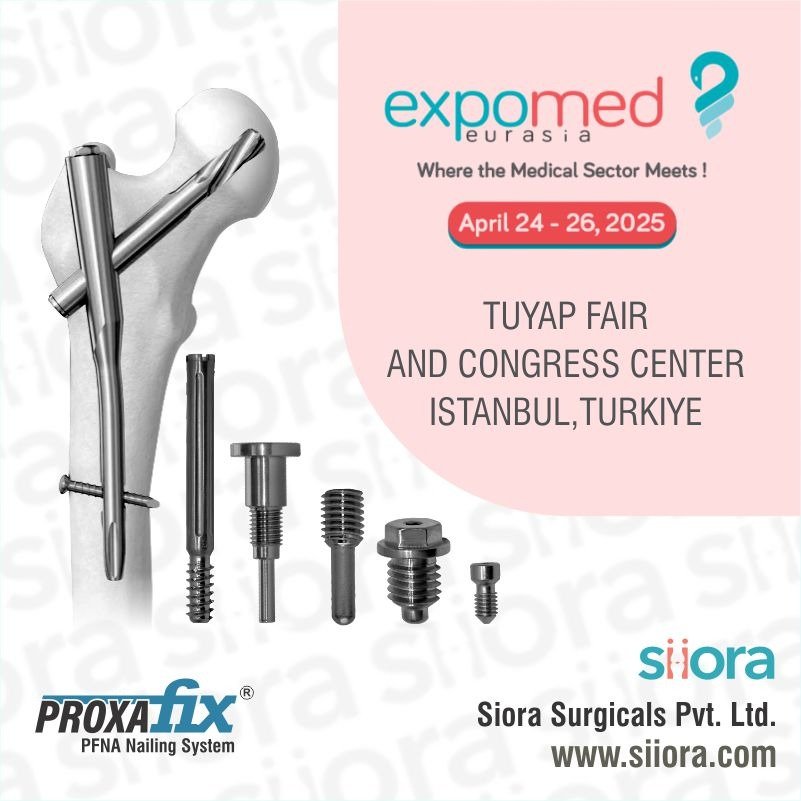The demand for orthopedic implants is high across the globe and this is because of the number of cases of broken bones that are reported annually. In the last 3-4 decades, this field has grown to a great extent and so does the quality of orthopedic devices. The advancements in the industry have led to improvements in trauma implants and they are now much more effective when compared to the ones used earlier.
To reduce the rejection rate of implants and deliver improved post-surgical outcomes, different types of coatings are applied. One of the most commonly used coatings is ‘Hydroxyapatite Coating.’ In this post, our sole focus will be on discussing what hydroxyapatite (HA) coating is and how it helps improve the performance of orthopedic devices.
Why Coatings Are Important on Orthopedic Implants?
Not all metals, ceramics, and polymers are compatible to manufacture trauma implants as certain considerations need to be met. After years of studies and research, only some materials have been approved to produce orthopedic devices.
It is a serious matter, as the implants are applied inside our body, and hence, the materials used must not interfere with the normal functioning of our body, and neither they should produce any adverse reactions. In simpler terms, we should say that metals or non-metals used to manufacture implants must be biocompatible as they need to stay for years inside a human body. Besides this, they must also possess excellent weight and impact resistance along with high durability.
Now, it is not possible to get all these properties in a single biomaterial thus, coatings are applied to get the required characteristics in the implants. Coatings not only improve the structural characteristics but also help in better bone integration.
The two most applied coatings on the implants are porous titanium coating and hydroxyapatite (HA) coating. These coatings are applied in layers depending upon the required thickness and porosity.
What is Hydroxyapatite?
You would be surprised to know that hydroxyapatite is a naturally occurring compound that is also present in bones and teeth, in fact, it is a primary inorganic component in them. In our bones, HA is present in its carbonated form in large amounts. Besides this, the bones of the mammals, fishes, shrimps, seashells, and eggshells of birds also comprise HA. Above all, rocks like sea corals and limestone also have hydroxyapatite.
The HA coating applied on implants is derived from the above-mentioned sources and can also be synthesized chemically. This coating plays a crucial role in enhancing the properties of orthopaedic devices.
What is the Importance of Hydroxyapatite Coating?
Studies have confirmed that HA coating on implants has shown excellent results for bone repair, bone regrowth, and successful integration. HA is not new to this use. It is something that is being used for hundreds of years for bone repair and to rebuild damaged or missing parts in the bone grafts.
Being a component of our bones, hydroxyapatite coatings show positive reactions with our bones when an HA-coated implant is placed inside our body. It is not only compatible with the body but is also very stable, hence, it will not break easily. Hydroxyapatite possesses excellent osteoconductive properties plus, it is bioactive as well.
HA is known to properly bind with the bones and help regenerate bone tissues to deliver excellent results. Thus, applying HA coating on the implants helps reduce implant rejection or failure chances while ensuring improved and successful implant integration. Here, it is always important to ensure that the HA coating is applied properly.
How Hydroxyapatite Coatings Function when Applied on Implants?
Hydroxyapatite is known to have innate chemical similarities to the bone, thus, when it is coated on implants, it helps the natural bone to fix to the implant by providing an osteophilic surface. HA is also known to have good osteoinductive properties and hence, it enhances the functioning of bone-forming cells osteoblasts.
For an implant to function properly, it is necessary that the surrounding bones must accept and integrate it into the body. Here, HA coating ensures that the implant will excellently get integrated into the body in a maximum of cases.
Now, you might be thinking that when hydroxyapatite is such a great compound then why we shouldn’t make implants using it instead of coating it over other metals. So, implants made entirely from HA are not strong enough to bear the weight of the body. Thus, this idea is dropped. Implants made from titanium are considered best owing to their biocompatibility and good mechanical properties. To provide good osteointegration properties, HA coating is applied to them.
What Are the Factors that Need to be Considered with HA Coating?
There are many ways by which HA coating could be applied on implants. They may include plasma spray, electrochemical deposition, dip coating, etc. Besides this, the accuracy at which the coating is applied is the key. Below mentioned are factors to be considered while applying HA coating:
Thickness
When it comes to the thickness of the coating, then it should not be too thin and too thick. This is because a thin coating might not show the expected reaction with the bone. Whereas a thick coating might result in mechanical failure. So, the ideal thickness of HA coating must be there to deliver the expected results.
Uniformity
Now, we did talk about ideal thickness but, another point to be noticed here is a uniform thickness. Throughout the implant, the same thickness must be there as unevenness could hamper the performance.
Surface Texture
The quality of the growth of the bone and formation of blood vessels somehow depends upon the surface texture of the coating applied on the implant. It is measured as the roughness and porosity on the implant’s surface.
Antibacterial Properties
Scientists are creating HA with antibacterial properties. This is because an infection is found to be one of the most common reasons for implant failure. Thus, if you would be able to provide antibacterial HA coating on orthopedic implants, the rejection rate due to infection will also reduce.
Siora Surgicals Pvt. Ltd. is a CE-certified and experienced manufacturer of an extensive range of orthopedic implants in India. It also manufactures HA coated implants like Tapered Schanz pins & Radial Head Prosthesis. With over 30 years of experience, the company specializes in producing all kinds of orthopedic implants. Siora also exports its ISO 13485:2016 certified implants to clients based in different countries across the globe. It also offers HA-coated orthopedic implants as per the client’s request.








